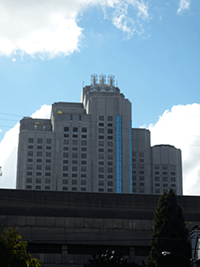 Prospective single-blind randomized clinical trial to assess the efficacy of UVA1 phototherapy in vitiligo. UVA1 phototherapy has been shown to be useful for a variety of skin diseases due to its anti-inflammatory effect and deeper penetration. However, there are only a few studies published on the efficacy of UVA1 in vitiligo.
Prospective single-blind randomized clinical trial to assess the efficacy of UVA1 phototherapy in vitiligo. UVA1 phototherapy has been shown to be useful for a variety of skin diseases due to its anti-inflammatory effect and deeper penetration. However, there are only a few studies published on the efficacy of UVA1 in vitiligo.
Study Location:
The Skin Care Center, Vancouver General Hospital
Vancouver, British Columbia, Canada, V5Z 4E8
- Must be older than 18 years of age
- Must be a resident of Canada
- Must have localized or generalized vitiligo
- Must have a depigmented area 4 sq. inches (25 cm2) or larger,
(excluding face, genitals, hands and feet) with no more than 10% repigmentation.
Exclusion Criteria:The following will not be eligible:
- Patients who received treatment for vitiligo within the past 3 weeks.
- Patients known to have a photosensitivity disorder
- Patients with a history of previous skin cancer
- Patients with a history of severe medical illness or immunosuppression
- Patients who are pregnant or breast-feeding
Treatments will be given Monday to Friday for 8 weeks with a total of 40 treatments. Assessments will be done every 2 weeks while receiving treatment, and at 4, 8, and 12 weeks post-treatment.
If you are interested in participating or would like more information:
Contact: Co-Investigator: Mohammed I AlJasser, MD, FRCPC
Phone: 1-778-859-5522 or Email:mj_derma@hotmail.com
Principal Investigator: Harvey Lui, MD FRCPC
source: http://vitiligosupport.org/newsletters/fall2013/fall.html
Editors Note: UVA1 is a relatively new form of phototherapy that has been found to be effective in treating several skin disorders, including atopic dermatitis, localized scleroderma, systemic sclerosis, cutaneous T-cell lymphoma, lupus erythematosus, and others. Side effects (burning, hyperpigmentation, redness, itch, etc.) appear less frequently compared to conventional phototherapy, and none serious that can be traced directly to UVA1 treatment, though long-term studies are not yet available. Instances of UV-induced burning were actually less than with broadband UVB or PUVA treatments. UVA1 is reported to induce immediate tanning and pigment darkening. Responses from UVA1 treatments continue even months after the treatment is completed therefore generally requiring fewer overall treatments. UVA1 units consist of metal halide lamps equipped with special optical filters, which emit longer, more penetrating wavelengths than the fluorescent UVA tubes used with PUVA. Both smaller units to treat localized areas and larger cabinets to treat the whole body are available. Use of UVA1 light units are limited in the U.S., due most likely to the high cost of the equipment, which can be 2-3 times more expensive than conventional whole-body light units.
Originally Oct. 5, 2013
